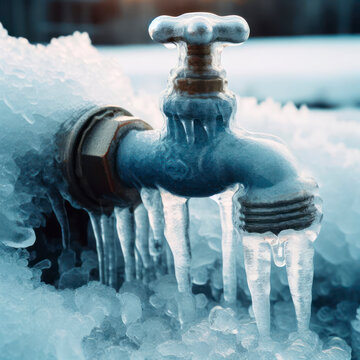Ways to Maintain Your Pipes from Freezing Damage: Important Tips
Ways to Maintain Your Pipes from Freezing Damage: Important Tips
Blog Article
The content below pertaining to 6 Ways to Prevent Frozen Pipes is without a doubt motivating. You should investigate it.

Cold weather can wreak havoc on your plumbing, particularly by freezing pipes. Here's how to stop it from happening and what to do if it does.
Intro
As temperature levels decrease, the danger of frozen pipelines boosts, potentially resulting in costly fixings and water damages. Comprehending exactly how to prevent icy pipes is crucial for home owners in chilly environments.
Prevention Tips
Insulating prone pipelines
Cover pipes in insulation sleeves or make use of warm tape to shield them from freezing temperatures. Concentrate on pipes in unheated or outside locations of the home.
Home heating techniques
Maintain indoor rooms sufficiently warmed, specifically locations with pipes. Open up closet doors to permit cozy air to distribute around pipelines under sinks.
Just how to recognize icy pipelines
Seek lowered water circulation from faucets, unusual odors or sounds from pipelines, and noticeable frost on revealed pipelines.
Long-Term Solutions
Structural adjustments
Consider rerouting pipes away from outside walls or unheated areas. Include added insulation to attic rooms, basements, and crawl spaces.
Updating insulation
Buy premium insulation for pipelines, attic rooms, and wall surfaces. Appropriate insulation assists keep consistent temperatures and lowers the threat of icy pipes.
Protecting Outdoor Pipes
Garden pipes and outdoor faucets
Disconnect and drain pipes yard tubes prior to wintertime. Set up frost-proof faucets or cover outdoor taps with protected caps.
Comprehending Icy Pipelines
What creates pipelines to freeze?
Pipelines freeze when subjected to temperatures below 32 ° F (0 ° C) for prolonged periods. As water inside the pipes freezes, it broadens, taxing the pipeline walls and potentially causing them to burst.
Dangers and damages
Frozen pipes can result in water disruptions, property damage, and expensive repair work. Burst pipes can flooding homes and trigger comprehensive structural damage.
Indications of Frozen Water Lines
Determining frozen pipelines early can avoid them from breaking.
What to Do If Your Pipelines Freeze
Immediate actions to take
If you presume icy pipelines, keep faucets available to alleviate pressure as the ice thaws. Use a hairdryer or towels soaked in warm water to thaw pipelines slowly.
Final thought
Avoiding frozen pipelines requires proactive procedures and quick actions. By recognizing the reasons, signs, and preventive measures, homeowners can secure their pipes during cold weather.
5 Ways to Prevent Frozen Pipes
Drain Outdoor Faucets and Disconnect Hoses
First, close the shut-off valve that controls the flow of water in the pipe to your outdoor faucet. Then, head outside to disconnect and drain your hose and open the outdoor faucet to allow the water to completely drain out of the line. Turn off the faucet when done. Finally, head back to the shut-off valve and drain the remaining water inside the pipe into a bucket or container. Additionally, if you have a home irrigation system, you should consider hiring an expert to clear the system of water each year.
Insulate Pipes
One of the best and most cost-effective methods for preventing frozen water pipes is to wrap your pipes with insulation. This is especially important for areas in your home that aren’t exposed to heat, such as an attic. We suggest using foam sleeves, which can typically be found at your local hardware store.
Keep Heat Running at 65
Your pipes are located inside your walls, and the temperature there is much colder than the rest of the house. To prevent your pipes from freezing, The Insurance Information Institute suggests that you keep your home heated to at least 65 degrees, even when traveling. You may want to invest in smart devices that can keep an eye on the temperature in your home while you’re away.
Leave Water Dripping
Moving water — even a small trickle — can prevent ice from forming inside your pipes. When freezing temps are imminent, start a drip of water from all faucets that serve exposed pipes. Leaving a few faucets running will also help relieve pressure inside the pipes and help prevent a rupture if the water inside freezes.
Open Cupboard Doors
Warm your kitchen and bathroom pipes by opening cupboards and vanities. You should also leave your interior doors ajar to help warm air circulate evenly throughout your home.
:strip_icc()/snow-outdoor-faucet-pipes-4af65d1e5e904fb1aa7bf74071fe5d89.jpg)
As a keen person who reads about Winter Plumbing Precautions: Preventing Frozen Pipes, I think sharing that piece of content was really helpful. So long as you liked our blog posting if you please do not forget to pass it around. I take joy in reading our article about Winter Plumbing Precautions: Preventing Frozen Pipes.
Visit Page Report this page